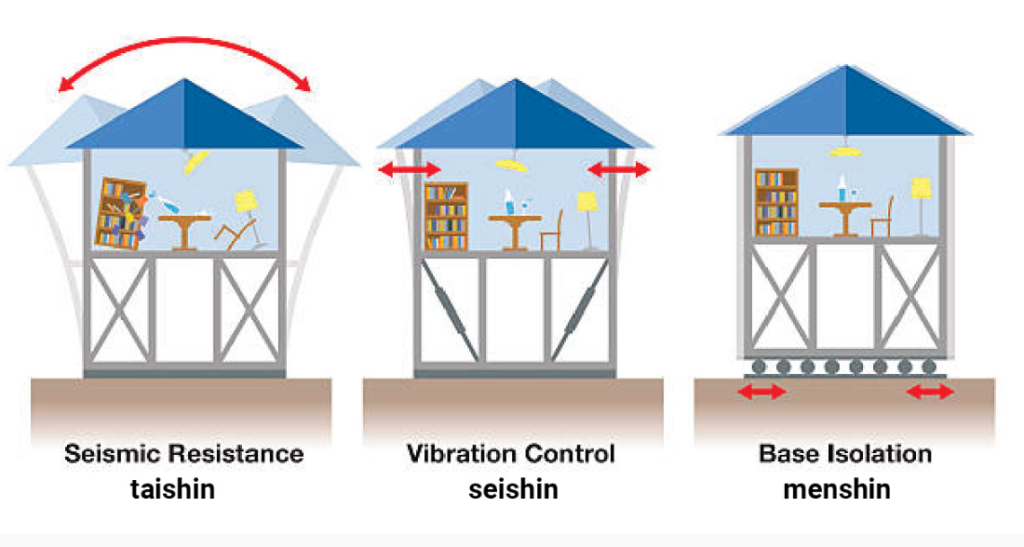What happened in Japan?
On 1 January 2024, when the world was celebrating the beginning of a new year, Japan collided with a terrible 7.6-magnitude earthquake. “In western Japan, the 7.6-Criminal earthquake is emerging after the devastation, which shook the country by killing dozens of people.” This earthquake was not alone. Many earthquakes, small and large, followed by. Overall, more than 155 earthquakes occurred in just one day. Because of this, sea waves hit about 1 meter high on the west coast of Japan. The Meteorological Agency of Japan also released a major tsunami alert. Although this warning was later downgrated, the earthquake itself caused adequate damage. Dozens of buildings were completely destroyed. Electricity was cut for thousands of houses. Some places were surrounded by flames. And by 2 January, 55 people have been declared DEAD. Japanese Prime Minister Fumio Kishida says that this situation is a fight against time. Rescue operations are going on and efforts are being made to save the trapped people. But on 2 January, another unfortunate incident occurred in this country. A Japan Airlines airplane crashed with a Japan Coast Guard aircraft at Tokyo Airport. Subsequently, both aircraft caught fire. “Japan Airlines aircraft caught fire at Hanida Airport in Tokyo and all runways at the airport have been closed.” This Japan Coast Guard aircraft was getting ready to help people affected by earthquake. Fortunately, all the people of the other aircraft were safely evacuated. But 5 out of 6 crew members in the Coast Guard aircraft lost their lives. The 29 -year -old aircraft captain was the only person who survived.
How does Japan redevelop itself?
Two big questions arise here. First, why are there so many earthquakes and tsunamis in Japan? Second, how dos japan deal with these disasters? Because if an Earthquake of the same magnitude had Hit Any Other Country, Perhaps, Thousands of People Child Have Lost their lives. The death toll in japan is beLow 100 as of now. How Does Japan Protect Itself Against Such Circumstances? Let’s undersrstand this video. The earthquake that just hit japan is named the 2024 Sea of Japan Earthquake or the Noto Peninsula Earthquake. You can see its exact location on this map on the screen. There’s a region called the noto peninsula in Japan. You have read about peninsulas in school. It is a piece of land surrounded by water on three sides. The epicentre of this earthquake was located here. The Sea of Japan, in the West of the Country. It is 500 km Away from Tokyo, Japan’s Capital. But even so, this earthquake was felt in tokyo. Now, our first question is, why do so many earthquakes take place in Japan? The answer to this is hidden in the map. Look at this map.

This is the map of the Earth’s 16 Major Tectonic Plates. Tectonic plates are the outer-most layer of the earth, made up of the earth’s crust and the upper part of the mantle. The heat that is generated in Earth’s core, release contexts which causes the tectonic plates to move slowly. These are the 16 main tectonic plates that move slowly year after year. When they collide with each other, Earthquakes Happen. So, The Countries and the Areas That Lie on the Boundaries of the Tectonic Plates are Prone to Earthquakes the Most. And the thing about japan is that it is situated at a place where four tectonic plates come togeether. The Pacific Plate, The Philippine Plate, The Eurasian Plate, and the North American Plate. This is the biggest reason why so many earthquakes are seen in japan. Among them, the pacific plate stands out a bit. Since it has the Highest Amount of Tectonic Activity. So, the boundary of the pacific plate is known as the pacific ring of fire. Because this causes the highest number of Earthquakes in the world. As well as the highest number of volcanoes. To some extent, this is true for the other plates as well. And the countries located on their boundaries witness a higher frequency of Earthquakes. For example, if you see India’s Northern Boundary, The Boundary Between the Indian and Eurasian Plates, that passes through nepal, amidst the Himalayan mountains, this causes devastating earthquakes in Nepal. The Earthquakes in North India, In Delhi and Its Surrounding Regents, in Most Cases, their Empicantre Lies Between these two plates. Compare this with regions like australia, russia or europe, where you rarely see any earthquakes. When was the last time you heard about a terrible Earthquake in Australia? It’s not like there have been no earthquakes in australia at all. But the regions that lie in the middle of the tectonic plates, Get Earthquakes at a Lower Frequency. And when earthquakes do Occur, they are not as devastating. And the reason behind this is that these major tectonic plates are made up of minor tectonic plates. And, at times, the collision between the Major Tectonic Plates Can Be Felt even in the middle of the plate. But depending on the way that these main tectonic plates collide with other, Various types of boundaries can be formed. Such as the convergent boundary, when one plate collides and slips under the other. Or Divergent Boundary, where both plates move from each other. Or transform boundary, when both plates move parallel aganst each other. Among these, the most dangerous earthquakes occur when convergent or transform boundaries are formed. And the boundary of the pacific plate is a convergent boundary.
It has a specific sub-type knowledge as the subduction zone. In the subduction zone, causes the most powerful earthquakes into being in this type of collision, when one plate collides with another, it goes right under the other submerging into the mantle. And when this happy, as you can see in the diagram, a deep cavity or hole is formed under the sea on the boundaries of the two plates, which is called a trend. These underwater trenches are often the Deepest Point in the Ocean. They can be 3 to 4 kilometres deeper than the surprising seabed. The Deepest Point on Earth in Underwater Known as the Mariana Trench. This Trench is 10.9 Kilometres Deep. In Mariana Trench, The Point Challenger Deep is the Deepest Point in Any Ocean and on Earth. You would have heard about it a lot. But Perhaps, you might not know that there is a Deep Trench in the East of Japan, Known as the Japan Trench. The depth of this trench is 8.4 km. There are very few countries in the world that are located so close to such Deep Sea. Look at this map. This map shows you the depth of the sea in different parts of the world. The lighter the color, the shallower the ocean. And the Darker the color, The Deeper The Ocean. Look Around Most of the Countries. Indian Coastlines, African Coastlines, South American Coastlines they are shown in a light color. But zoom in and look at japan. On the right side of japan, there is a massive dark area. This is the japan trench. And through it crosses, our imaginary ring of fire. The pacific ring of fire. Due to the movement of the tectonic plate, such Horoscope Earthquakes are caused, the sea is so deep here, most number of Volcanoes are found here, and due to this, the area that are that gets the Most Number of Japan . Japan’s coastline is very close to this trend, which means that the tsunami waves have to travel only a short distance and there isnys for sufficient time for Issue for Warning. For this reason, Japan is at the Highest Risk from Tsunamis. In Fact, The Word Tsunami is derived from Japanese. Tsu-nami is made up of tsu and nami. Tsunami means harbor and tsunami means wave, meaning harbor-wave. Harbour is also known as a seaport. Since there was so many tsunamis in japan, when the news of the japanese tsunamis spread all over the world, the word tsunami became power and people started using it since. Approximately 90% of the world’s earthquakes take place in this Pacific ring of fire. And approximately 75% of active volcanoes are also found here. Since the geography of this area is such, historically, Japan has Always Been in a Danger Zone. But Perhaps this is why Japan has been at the forefront at controlling the damage caused by earthquakes and tsunamis.
What does Japan do exactly?
Buildings in Japan have to meet strict earthquake-proof standards. There are three standard. The lowest taisin is standard. The requirement makes the minimum thickness of the beams of columns, walls and buildings mandatory. So that if an earthquake shakes the building, the building can oppose it. The second session is the standard that is recommended for tall buildings where they need to install dampors to absorb earthquake energy.

They need to put large, coarse rubber mats under the foundation of the building. These rubber mats absorb earthquake vibrations very well. But there is a third standard, which is even more strict, the most advanced standard, Menshin standard. In this, the entire structure of the building is different from the ground. Layers of lead, steel and rubber are installed so that the building runs independently of the ground. Even if the land moves, the building may remain stable. This prestigious Skytry Tower was built using the same standard in Tokyo City. It is one of the most earthquake-resistant buildings in the city. When the horrific tohoku earthquake killed Japan in 2011, the magnitude of that earthquake was 9.0. This building did not even get scratches. On the other hand, Japan has adopted several strategies to protect themselves against the tsunami, although they have not been as successful as the people who protect Japan against the earthquake. They have built a tsunami-controlled forests. Planting a large number of trees to prevent tsunami force. They have created the coastal dike, which looks like this. These are long structures that are made of stones. These dikes are very expensive to build, but they can successfully reduce the effect of tsunami. Apart from these, tsunami withdrawal towers are constructed. A high-risk areas of tsunamis and a significant population, because people do not get a lot of time for withdrawal, they are said to take shelter in these towers, located at a high point, secured from tsunami For. They have improved their warning systems. Withdrawal exercises are conducted regularly, so that local people can help understand what they need to do in case of tsunami. And how to prepare for rescue operation. And finally, they have built walls near the sea.

Sea walls. Japan has 40% of the 22,000 miles long beach, of which these concrete is surrounded by sea walls. But, unfortunately, these walls are not always effective. As happened in 2011. Watch this video. The earthquake was the most powerful earthquake in the history of Japan due to this tsunami. This tsunami also caused Fukushima nuclear disaster. Atomic reactor was damaged, leaking radiation spread in the Pacific Ocean. The 2011 earthquake and tsunami were the most destructive in the history of Japan. About 20,000 people lost their lives in this. Subsequently, his government tightened his standards. Thankfully, the disaster of this year did not become as dangerous and fatal.



